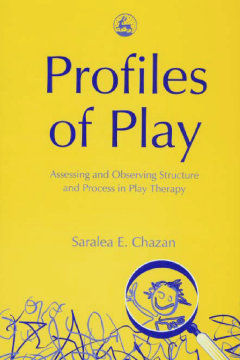
Additional Information
Book Details
Abstract
Written by a leading child psychologist, this clearly written and practical book provides a template for interpreting change and meaning in children's lives through their play activity. It shows how each child's pattern of play has a distinct profile of measurable features. These can be identified - and can be used to assess the child's development.
The processes of change that a child goes through and the different kinds of play profiles are clearly illustrated with examples from real life. This will be a useful resource for all professionals who work with children and are looking to support their development through a deeper understanding of their inner experiences, including family therapists, educational psychologists, special needs teachers, play therapists and child care social workers.
Profiles of Play is a good source for tracking the progress of young patients. Some of Chazan's authoritative statements on the meaning of play in the treatment process might make useful handouts to give parents of new child-patients who are bewildered why anyone should be paid for just playing with their troubled children. The whole book impresses one with the richness of the enterprise.
Psychologist
Saralea E. Chazan is in private practice in New York City and assistant professor of psychology and psychiatry at Weill Cornell Medical Center. She has published widely in the field of child psychotherapy.
Chazan uses a structured approach to observational data and contextual involvement in order to make sure that specific circumstances will not stop her asking important questions about what is going on at any stage of the therapeutic process - with questions she needs to ask in order to understand. At this level, the tension between interpretation and encounter - which is the therapist's version of the thought/feeling conflict - may be prevented from interfering with the reader's own imaginative participation in what is being described. The result is an extremely vivid piece of writing.
The Journal of the British Association of Dramatherapists
